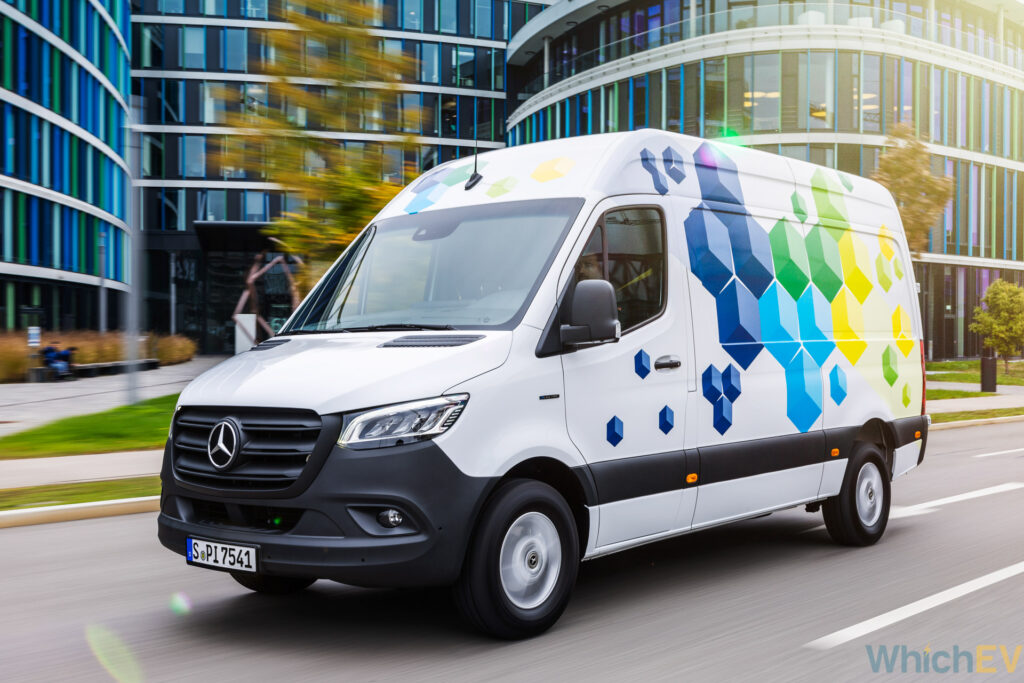Mercedes-Benz has launched an electrified version of its popular Sprinter that promises to take the capabilities of EV panel vans to a new level.
Until the advent of the large-scale sale of EVs, aerodynamics was more of a marketing term when it comes to describing vehicles. The instant high-energy release capability of burning fossil fuels allows polluting engines the ability to overpower nature and drive brick-shaped cars and vans to high speed with little regard to waste. However, present-day battery technology means we all need to be more frugal in order to reduce necessary changes to our personal driving style. Nowhere is it easier to experience the need for better aerodynamics, and/or larger batteries, than when you drive a van on a motorway in cold weather. With the eSprinter, Mercedes is looking to reduce range anxiety for commercial mileage. Has it succeeded?
For any kind of commercial vehicle, range is essential. Personal travel can be inconvenienced by long stops for juice, but businesses will lose money when a vehicle is stopped for too long. The Mercedes eSprinter boasts a maximum WLTP City range of close to 310 miles. Even if you're driving on a mix of roads – including high-speed sections – you will still benefit from the WLTP range of 248 miles. How is that possible that a large van can achieve those distances? Mercedes is offering this new vehicle with a choice of 56, 81 or 113 kWh battery options.
The decision to go with lithium iron phosphate (LFP) cell chemistry has allowed for the battery variants to be kept free of cobalt and nickel, while retaining active thermal management to ensure maximum efficiency.
That said, it's hard to know why Mercedes only fitted a DC charger that can handle 115kWh. We guess the company's research must have shown that the likelihood of customers choosing a much faster charger from Gridserve, Osprey etc must have been minimal. The eSprinter will pick up a 60% charge (20-80%) in 28 minutes for the smaller battery and 42 minutes for the 113kWh option.
This motor system comes from the company's new electrification strategy, known as VAN.EA (Mercedes Vans Electric Architecture). There are two main components within the eATS power train in the eSprinter:
Efficient motor
Permanent magnet synchronous motor (PSM), which weighs only around 130 kilograms, is characterised by particularly high efficiency and optimised thermal management. The motor is available in two power levels, with 100 or 150kW of peak output, and delivers a torque of up to 400Nm.
Innovative Electric Rear Axle
The electrically driven rear axle makes cab chassis variants possible in addition to the classic panel van. For customers, Mercedes claims that this will bring advantages regardless of whether you choose the A2 or A3 length – along with a maximum gross vehicle weight up to 4.25 tons and trailer loads (up to 2 tons).
The new eSprinter will offer a multitude of technical innovations, including the cloud-based services in the Mercedes me digital ecosystem. It also comes with the latest software generation of the Mercedes-Benz User Experience (MBUX). Features include Navigation with “Electric Intelligence”, which helps customers plan ahead efficiently and effectively. For example, it shows the current range in real time depending on the current traffic situation and the topography of the route. It also calculates the best possible charging strategy to get to the destination as quickly as possible, or to have the desired state of charge (SoC) at the destination.
Authentication at the charging station is simple via MBUX, with payment via Mercedes me. Other highlights include increased performance, extensive personalisation options and optimisations of the “Hey Mercedes” voice control assistant.
“The new Mercedes-Benz eSprinter consistently follows our strategy – to be the leader in electric mobility with the most desirable vans while achieving profitable growth worldwide.”
Mathias Geisen, Head of Mercedes-Benz Vans
Mercedes has committed to launching its last ever non-electric vehicles in 2025, with the whole company aiming to be carbon neutral by 2039. Of the €350m invested in creating the eSprinter, €50m was used for upgrades and re-fits for the manufacturer's plants in Charleston USA as well as Düsseldorf and Ludwigsfelde in Germany. Ultimately, Mercedes sees itself taking the lead in electric drive vehicles across 60 markets.
That market has massive potential and we've already seen 50% year on year growth in the take up of battery electric vans. We will see significant pick-up in this area once the major metropolitan districts begin to enforce stricter fines for polluting vehicles.
Expect to see the new eSprinter on American/Canadian roads in Q3 with Europe following in Q4 2023 – pricing to follow. Register your interest now if you want to be among the first to see this new offer.
